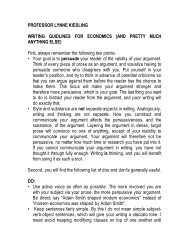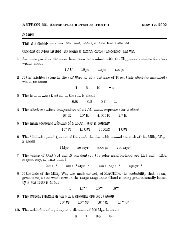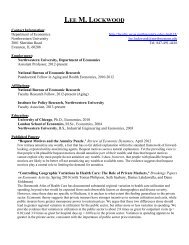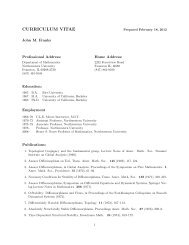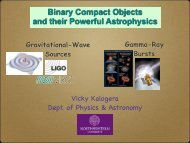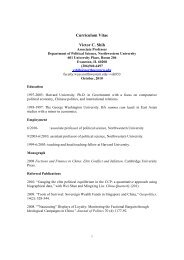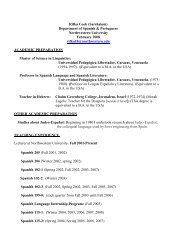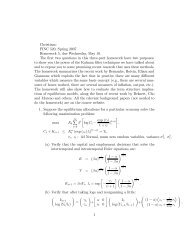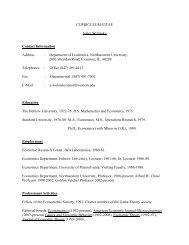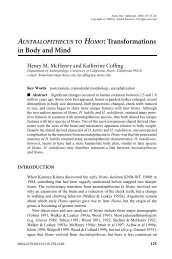DO PATENT POOLS ENCOURAGE INNOVATION? EVIDENCE ...
DO PATENT POOLS ENCOURAGE INNOVATION? EVIDENCE ...
DO PATENT POOLS ENCOURAGE INNOVATION? EVIDENCE ...
Create successful ePaper yourself
Turn your PDF publications into a flip-book with our unique Google optimized e-Paper software.
V. ARCHIVAL <strong>EVIDENCE</strong> ON ANTI-COMPETITIVE PRACTICES<br />
Archival evidence makes it possible to shed some light on factors<br />
(unobservable in the patent data) that may have caused the decline in innovation.<br />
All 20 pools in our sample were subject to antitrust litigation; 18 were dissolved<br />
by regulators (Table 13). 17<br />
Court records suggest that pool members used pools<br />
as a means to protect profits and divide markets. Pools that licensed to outside<br />
firms imposed price-fixing conditions while those pools that did not license<br />
divided markets according to geography and technology.<br />
Of the 20 pools that formed between 1930 and 1938, only 9 licensed their<br />
technologies to outside firms. Six of these pools licensed freely (railroad springs,<br />
Phillips screws, stamped metal wheels, wrinkle finishes, fuse cutouts, and<br />
ophthalmic frames) to between 9 and 200 firms.<br />
Each of these pools was found guilty of price-fixing. For example, the<br />
price fixing agreements in a pool formed between two patentees of dropout<br />
cutouts in 1938 were held to be illegal ten years later in United States v. Line<br />
Material Co., 333 U.S. 287 (1948). One firm, Southern States Equipment, held a<br />
patent that blocked the patent assigned to Line Material Company. The two firms<br />
entered into an agreement whereby Line Material would be the exclusive licensor<br />
of Southern’s patent and Line Material was free to fix prices for devices that<br />
embodied both patents. 18<br />
17 The 1938 slip covers pool was dissolved independently of regulators in 1949 when one of the<br />
two founding members claimed the agreements was “induced by false and fraudulent<br />
misrepresentations” but the pool was found guilty of price fixing in 1956. The 1933 machine tools<br />
pool dissolved independently during antitrust proceedings in 1955 due to internal litigation<br />
between pool members over the terms of their agreement.<br />
18 United States v. Line Material Co., 333 U.S. 287 (1948).<br />
22



